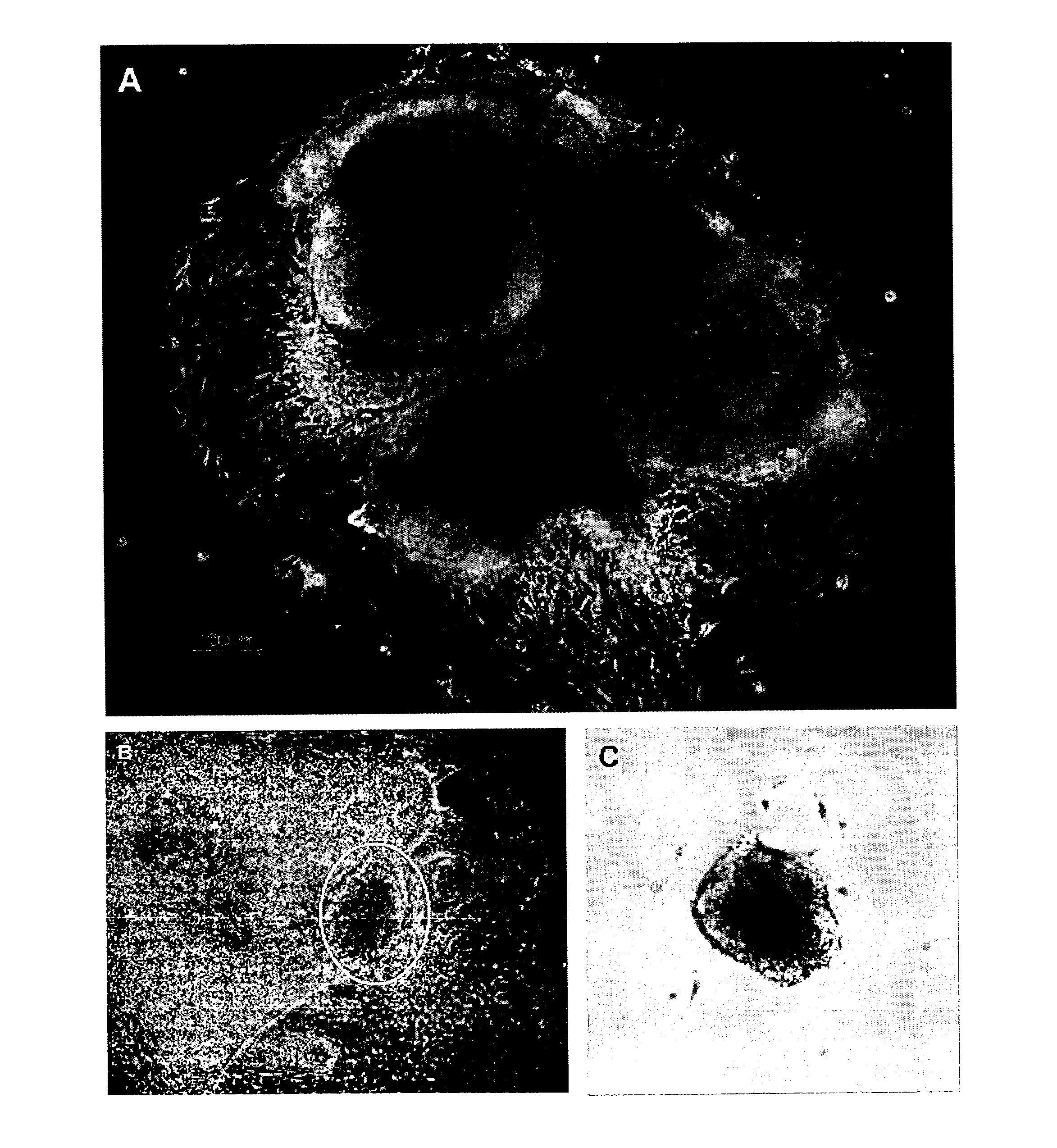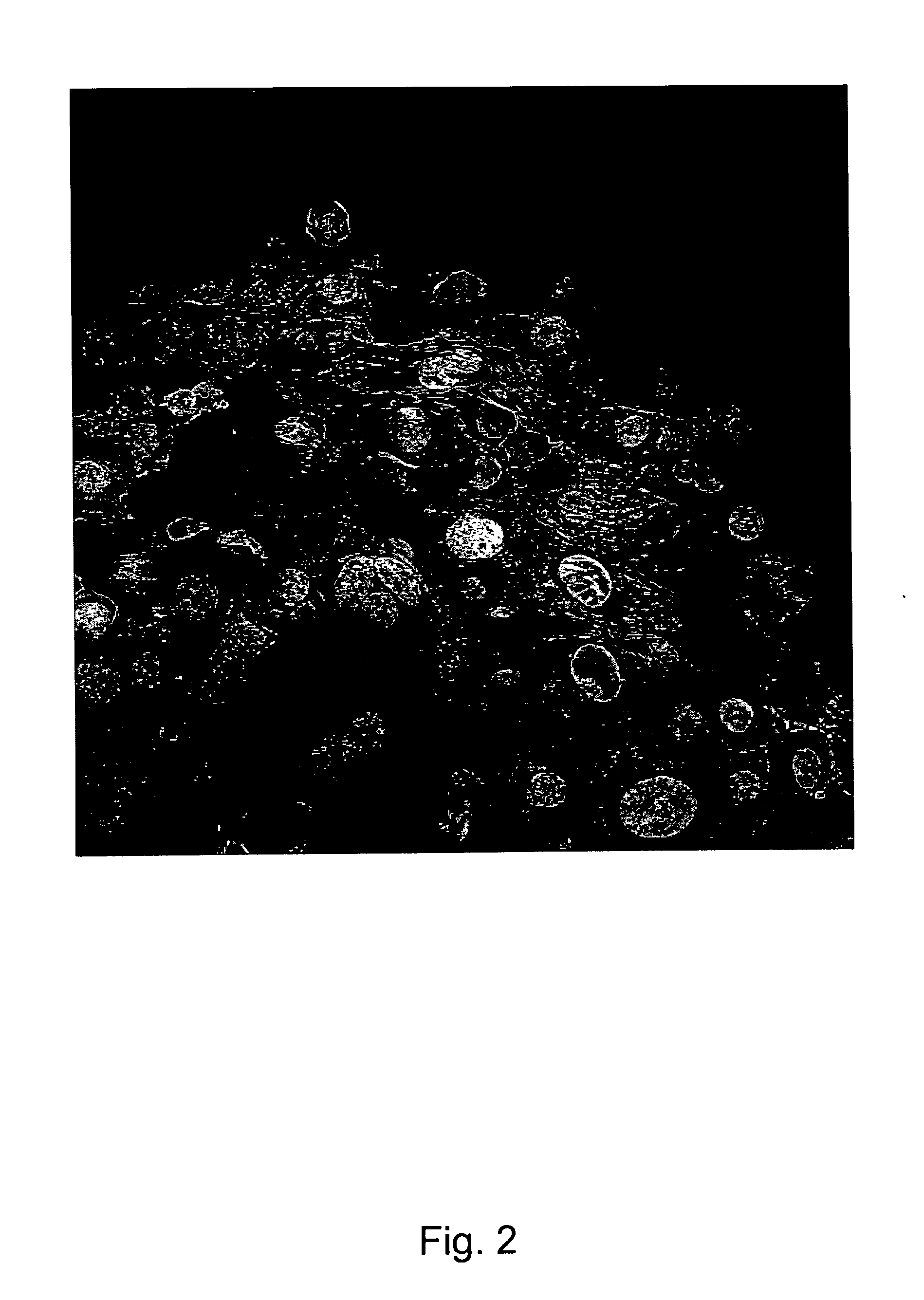Cardiomyocyte-like cell clusters derived from hbs cells
- Summary
- Abstract
- Description
- Claims
- Application Information
AI Technical Summary
Benefits of technology
Problems solved by technology
Method used
Image
Examples
example 1
Differentiation of hBS Cells to Cardiomyocyte-Like Cell Clusters
[0253]Spontaneously contracting cells were derived from undifferentiated hBS cells cultured on MEF cells (Heins et al 2004 Stem Cells). The cell lines used for this experiment could be the hBS cell line SA002, SA121, SA001, SA002.5, SA461 (Cellartis AB, Goteborg, Sweden, http: / / www.cellartis.com) and they can be propagated as described Heins et al. 2004. These cell lines are listed in the NIH stem cell registry and the UK Stem Cell bank. The hBS cells were detached from the feeder layer by incubation with collagenase IV (200 U / ml), for 10-15 minutes at 37° C. The cell suspension was transferred to a 15 ml tube, and after the cells had sedimented, the supernatant was removed. The colonies were resuspended in Knock Out DMEM supplemented with 20% FBS, 1% penicillin-streptomycin, 1% Glutamax, 0.5 mmol / l β-mercaptoethanol and 1% non-essential amino acids (all from Invitrogen, Carlsbad, Calif.) and dissociated mechanically in...
example 2
Micro Array Analysis of Cardiomyocyte-Like Cell Clusters (CMLC) Derived from hBS Cells
[0256]Cell Culture and Differentiation
[0257]The hBS cell line SA002 (Cellartis AB, Goteborg, Sweden, http: / / www.cellartis.com) was propagated as described Heins et al. 2004. This cell line is listed in the NIH stem cell registry and the UK Stem Cell bank. Differentiation of hBS cells was performed as described in Example 1 above. Using light microscopy clusters of spontaneously contracting cardiomyocyte-like cell clusters (CMLC) are frequently observed when hBS cells are differentiated through this protocol. For microarray experiments, three separate samples (biological replicates) of CMLC were collected. For comparison purposes, two independent samples from undifferentiated hBS cells and one sample from a mixed population of differentiated cells (i.e., no contracting CMLC present) were also collected for the analysis. The mixed population was collected as the remaining population of differentiated...
example 3
Real-Time QPCR of CMLC Derived from hBS Cells
[0300]Cell Culture and RNA Extraction
[0301]Spontaneously contracting CMLC were derived from undifferentiated hBS cells (SA002) (see Example 1). The hBS were detached from the MEF feeder layer by incubation with collagenase IV (200 U / ml), for 10-15 minutes at 37° C. The suspension was transferred to a 15 ml tube, and after the cells had sedimented, the supernatant was removed. The colonies were re-suspended in culture medium and dissociated mechanically into small aggregates of undifferentiated cells using a pipette. This cell suspension was distributed (200 μl / well) into a 96 well plate (Costar, Corning, untreated, v-bottom) and centrifuged for 5 min at 400×g. The plate was then incubated at 37° C. for 6-8 days. The 3D structures that formed were then transferred to gelatine coated dishes containing culture medium. After a couple of days spontaneously contracting clusters of cells (CMLC) were observed. Some of these clusters were harveste...
PUM
 Login to View More
Login to View More Abstract
Description
Claims
Application Information
 Login to View More
Login to View More - R&D
- Intellectual Property
- Life Sciences
- Materials
- Tech Scout
- Unparalleled Data Quality
- Higher Quality Content
- 60% Fewer Hallucinations
Browse by: Latest US Patents, China's latest patents, Technical Efficacy Thesaurus, Application Domain, Technology Topic, Popular Technical Reports.
© 2025 PatSnap. All rights reserved.Legal|Privacy policy|Modern Slavery Act Transparency Statement|Sitemap|About US| Contact US: help@patsnap.com



